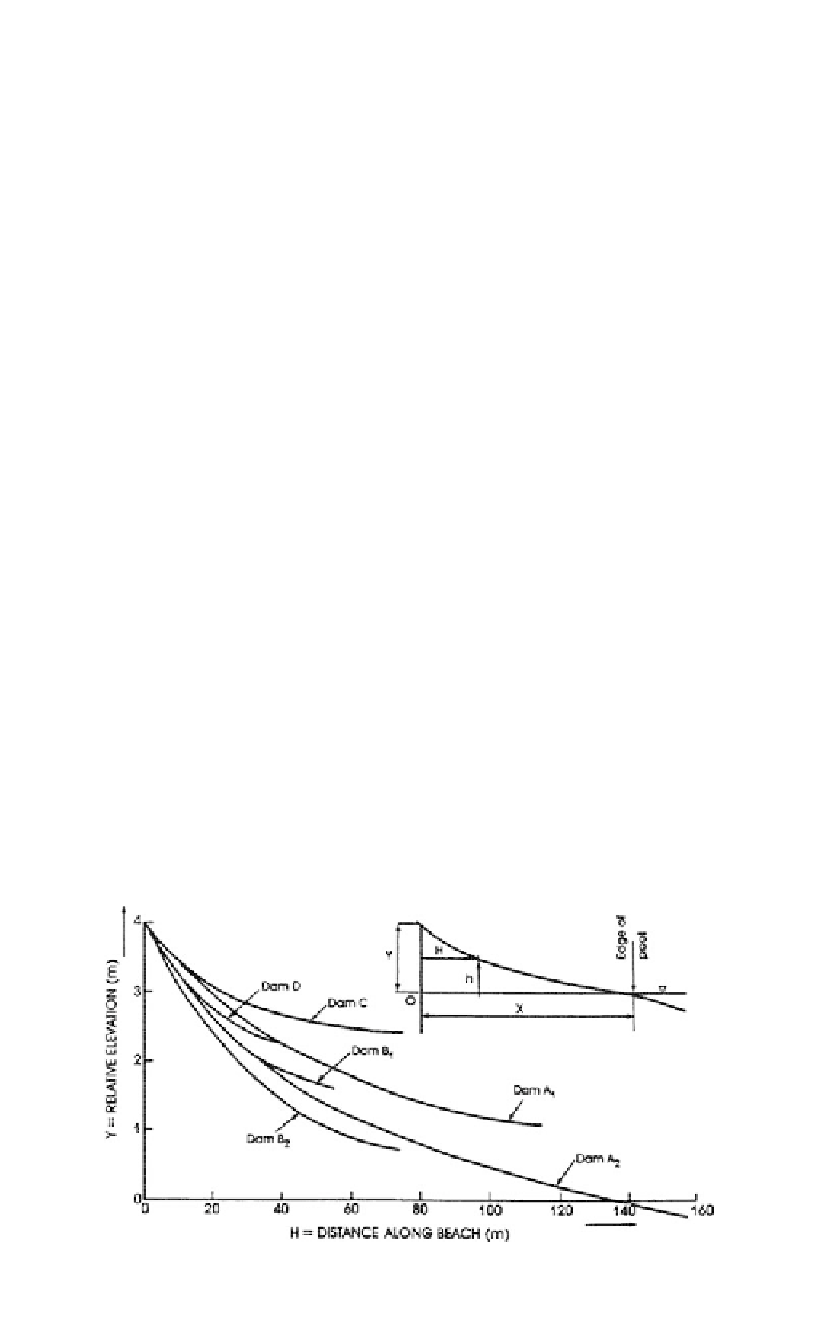Environmental Engineering Reference
In-Depth Information
There is no preferred method, each case has to be considered on its merits. The floating
barge system is usually more flexible and requires less stringent control of tailings deposi-
tion to maintain the decant pond near the decant tower. It also avoids the potential weak-
ness, from an internal erosion and piping viewpoint, of having a conduit through the
embankment. It is usually desirable to keep the water surface area to a minimum to reduce
evaporation of water (and hence reduce total water losses) and to optimise the benefits of
desiccation of the beached tailings.
19.4
PREDICTION OF TAILINGS PROPERTIES
19.4.1
Beach slopes and slopes below water
Tailings deposited in a tailings dam form a beach above the water level and also fill the
storage below the water level with a sloping surface. The beach above the water level is
commonly steeper adjacent to the discharge point than further away.
Figure 19.11 shows observed beach profiles for several dams containing platinum tail-
ings (Blight, 1988).
Figure 19.12
shows observed profiles for several tailings dams, in which fine grained tail-
ings with high clay contents are stored. Properties for these tailings are given in
Figure 19.5
and
Tables 19.2
and
19.3
.
The fact that the tailings deposit in this way is important because it results in a reduc-
tion in the available tailings storage volume compared to water storage, and determines
the position of the water pond, which is important particularly for upstream construction.
Blight and his co-workers have investigated beach profiles by laboratory experiments in
sloping flumes, and by observing beach profiles in the field. This work is described in
Blight, Thomson and Vorster (1985), Blight and Bentel (1983), Blight (1987) and Blight
(1988). The concept they have developed was originally proposed by Mellent et al.
(1973). It was found that by plotting dimensionless parameters h/y versus H/X, as shown
in
Figure 19.13
, the different profiles in Figure 19.11 all plotted to give a single “master”
beach profile with the equation
n
n
h/y
(Y/X)(1
H/X)
i
(1
H/X)
(19.12)
av
Measured beach profiles on six platinum tailings dams (Blight, 1988
, reproduced with
permission of ASCE
).
Figure 19.11.


